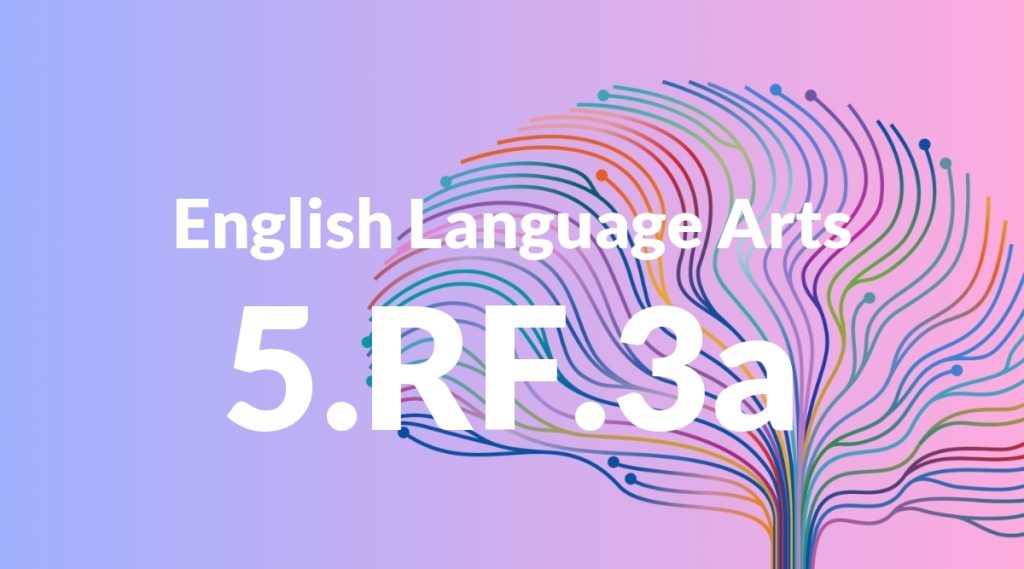Standard: 5.RF.3a – Use combined knowledge of all letter-sound correspondences, syllabication patterns, and morphology (e.g., roots and affixes) to read accurately unfamiliar multisyllabic words in context and out of context.
Grade level: Grade 5
Subject: English Language Arts
Domain: Reading: Foundational Skills
Teacher Overview
This standard focuses on helping students use their knowledge of letter-sound correspondences, syllabication patterns, and morphology to read unfamiliar multisyllabic words accurately. This skill is crucial for developing reading fluency and comprehension, as it enables students to decode complex words they encounter in various texts. Before tackling this standard, students should be comfortable with basic phonics, including common letter-sound correspondences and simple syllable patterns. They should also have some familiarity with prefixes and suffixes.
Once students master this standard, they will be better equipped to read more complex texts with greater fluency and comprehension. They will also develop a richer vocabulary and improved spelling skills, which will benefit them across all subjects.
Common Misconception 1
Some students may think that each letter in a word always corresponds to a single sound. This is incorrect because many letters can represent different sounds depending on their placement within a word and the letters around them.
Intervention 1
To address this misconception, teachers can use phonics instruction and word study activities to show how letters can have different sounds in different contexts. For example, the letter ‘c’ can sound like ‘k’ in ‘cat’ but like ‘s’ in ‘city’.
Common Misconception 2
Another common misconception is that breaking words into syllables is unnecessary for understanding their meaning. This is incorrect as syllabication can help students read and comprehend unfamiliar words more easily.
Intervention 2
Teachers can use syllable games and exercises to demonstrate how dividing words into syllables can simplify the reading process. For instance, breaking ‘unbelievable’ into ‘un-be-liev-a-ble’ can make it easier to read and understand.
Prerequisite Knowledge
Students should have a solid understanding of basic letter-sound correspondences, common syllabication patterns, and basic morphological elements such as prefixes and suffixes.
Subsequent Knowledge
After mastering this standard, students will be able to tackle more complex reading materials with greater ease, enhancing their comprehension and fluency. They will also develop a stronger vocabulary and better spelling skills.
Instructional Activities
- Phonics drills focusing on letter-sound correspondences
- Syllable division exercises and games
- Morphology lessons on roots, prefixes, and suffixes
- Reading and decoding multisyllabic words in context
- Spelling practice with multisyllabic words




